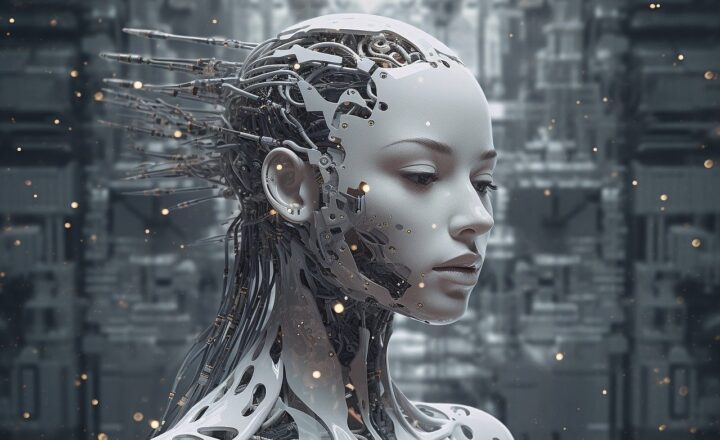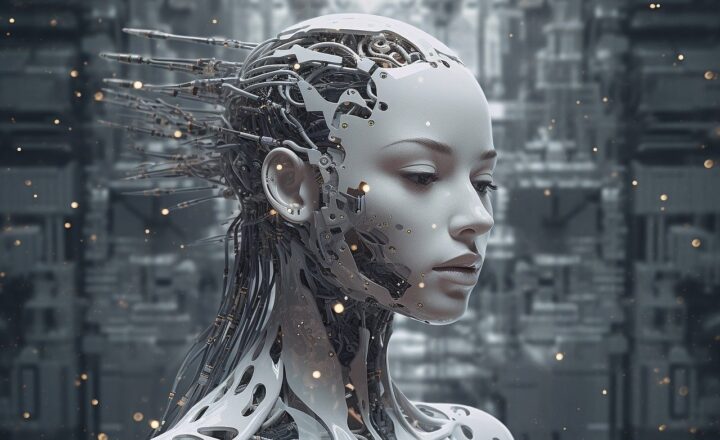The Role of AI in Transforming Healthcare Through Early Detection and Diagnosis
November 17, 2024

Artificial Intelligence (AI) has emerged as a critical force in reshaping various industries, with healthcare standing out as one of its most promising domains. The integration of AI into healthcare systems is revolutionizing the way medical professionals detect and diagnose diseases. By harnessing vast amounts of data, AI technologies are able to identify patterns and anomalies that may elude the human eye, leading to earlier diagnosis of conditions ranging from cancer to chronic illnesses. This article explores how AI is transforming healthcare through early detection and diagnosis, its underlying technologies, real-world applications, challenges, and the future it holds.
1. Understanding AI in Healthcare
AI refers to the simulation of human intelligence processes by machines, especially computer systems. In healthcare, AI systems utilize algorithms and software to approximate human cognition in the analysis of complex medical data
Some key functions of AI in healthcare include:
- Data Analysis: AI can process and analyze vast amounts of data swiftly, extracting meaningful insights that can aid in medical decision-making.
- Predictive Analytics: AI models can predict disease outbreaks, patient outcomes, and potential complications based on historical data.
- Natural Language Processing (NLP): NLP enables AI systems to understand and interpret human language, facilitating better communication and documentation in patient care.
The implementation of these functions is particularly critical in early detection and diagnosis, as timely intervention can significantly improve patient outcomes.
2. How AI is Enhancing Early Detection
Early detection of diseases is crucial for effective treatment and improved survival rates. AI technologies enhance early detection efforts through various innovative methods:
a. Medical Imaging and Radiology
AI algorithms have shown remarkable success in analyzing medical images. By utilizing deep learning techniques, AI can identify patterns in imaging data, such as X-rays, MRIs, and CT scans, that may indicate the presence of diseases like lung cancer or brain tumors.
Studies have indicated that AI can match or even exceed the diagnostic accuracy of human radiologists, particularly in identifying malignancies in mammograms. The early identification of these conditions allows for timely interventions, potentially saving lives.
b. Predictive Analytics for Chronic Diseases
AI-driven predictive analytics enables healthcare providers to identify at-risk patients before symptoms become severe. By analyzing patient data including medical history, lifestyle choices, and genetic predispositions, AI models can predict the likelihood of chronic illnesses such as diabetes, heart disease, and hypertension.
This proactive approach allows healthcare providers to implement preventive measures, lifestyle modifications, and regular monitoring for high-risk individuals, ultimately reducing the burden of chronic diseases on healthcare systems.
c. Genomic Data Analysis
Genomics plays a crucial role in personalized medicine. AI can analyze genomic data to identify genetic markers associated with various diseases. Early identification of these markers can lead to tailored treatments and interventions, especially in fields like oncology, where understanding an individual’s genetic predisposition can inform treatment plans.
3. Real-World Applications of AI in Early Detection and Diagnosis
AI is already making significant strides in real-world healthcare settings. Some notable applications include:
a. IBM Watson for Oncology
IBM Watson employs AI to assist oncologists in diagnosing cancer and recommending treatment plans. By analyzing large datasets of medical literature and patient records, Watson can provide evidence-based treatment options tailored to individual patients, improving the accuracy of diagnoses and treatment recommendations.
b. Google Health and Retinal Disease Detection
Google Health has pioneered AI applications in detecting diabetic retinopathy. Their model has demonstrated the ability to analyze retinal images with high accuracy, helping eye care professionals make timely diagnoses and subsequent referrals.
c. PathAI
PathAI is at the forefront of using AI for pathology, enabling pathologists to identify cancerous cells in biopsy samples more accurately. This enhancement in precision leads to timely and appropriate treatment plans, significantly impacting patient outcomes.
4. Challenges of Integrating AI in Healthcare
While the potential of AI in healthcare is immense, several challenges must be addressed for successful integration:
a. Data Privacy and Security
The use of AI in healthcare involves handling vast amounts of sensitive patient data. Ensuring data privacy and protection against breaches is paramount to maintain patient trust.
b. Interpretability of AI Decisions
Many AI algorithms operate as “black boxes,” making it difficult to understand how they arrive at specific conclusions. In the healthcare context, clear interpretability is crucial for clinicians to trust AI recommendations and maintain accountability.
c. Regulatory Challenges
The rapid evolution of AI technologies often outpaces existing regulatory frameworks. Developing regulations that balance innovation with safety and efficacy is essential for the sustainable adoption of AI in healthcare.
5. The Future of AI in Healthcare
The future of AI in transforming healthcare through early detection and diagnosis is bright. As technology continues to advance, we can expect:
- Increased Collaboration: The collaboration between medical professionals and AI systems will become more seamless, leading to improved patient care and enhanced diagnostic capabilities.
- AI-Driven Personalization: Patients will receive more personalized healthcare solutions, with AI providing tailored treatment options based on individual data.
- Wider Accessibility: AI technologies will enable wider access to healthcare insights, particularly in remote and underserved areas, improving overall public health outcomes.’
As we move forward, embracing AI’s role in early detection and diagnosis will not only improve individual patient outcomes but also transform the healthcare landscape to be more proactive, efficient, and accessible.
Conclusion
The integration of AI into healthcare represents a paradigm shift in early detection and diagnosis. As healthcare professionals and technologists work together, the potential to harness AI for improving patient outcomes continues to grow. While challenges remain, the commitment to addressing these issues will pave the way for a future where AI enhances the ability to detect diseases early, ultimately saving lives and fostering a healthier society.
In conclusion, the role of AI in healthcare is not merely a trend but a significant transformation that holds the promise of revolutionizing how we approach health and wellness, making early detection and accurate diagnosis attainable for all.







